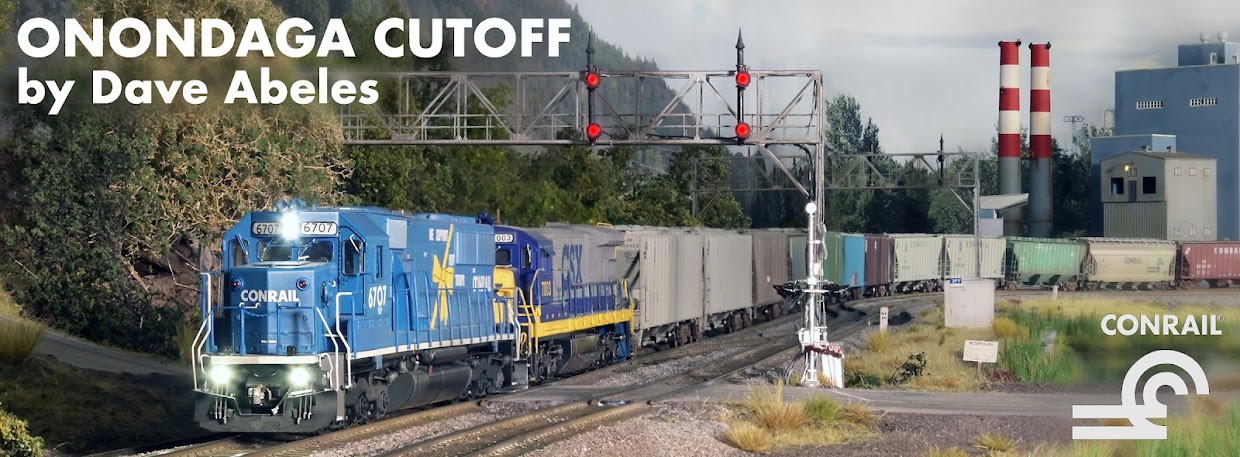My givens were the double-track main and the possibility of two trains working at once. Therefore, out at CP282 on the west end, I needed a universal interlocking, and I needed two yard leads that were both accessible from both directions. Here we see how that ended up looking, with weights holding down the first of the yard to be glued in place - the west end of the 'north runner':
Since the yard is on the geotextile filter 'fiber cloth' it is at a lower elevation than the main lines, which are up on foam roadbed. Therefore, there needs to be a ramp of sorts between the yard and the switches on the main, which I accomplished using my table saw and carefully cutting beveled ramps using some scrap pine I had in the train room. With some trial and error, this worked out well. Everything will be secured with latex adhesive caulk.
Some of you have asked about the fiber cloth I am using for my yard base - so far, so good! I staple it in place, being careful to set the first staple and pull the cloth snugly away from that first anchor before setting the next. I work around the perimeter and it seems to work well. The cloth also readily accepts the adhesive caulk, though it requires more than the roadbed did. The track is held fast after drying under weight, and the cloth effectively kills all sound beneath it.
This brings us to another aspect of yard design - different areas of the same yard. For example, since my yard serves a multiple-track mainline in both directions, and since two trains will need to work at once, I need two separate areas next to one another, each with its own ladders and leads. You can see how this is starting to come together below, looking east towards CP280. There is a back and front area to the yard, both of which will eventually have nicknames. Here we see the southernmost yard and its west ladder next to the mainline on the right, and the northernmost yard and ladder on the left:
Each part of the yard will have 4 storage tracks. The lead to the far left is the 'north runner' out to CP282, and allows a train to work the west end of the back yard without fouling another move on the 'south runner' which leads to the front yard. The crossover between the two leads allows a train access to either yard from the south runner, or access to either main track in a west direction at CP282 - an important item for operational flexibility.
The next entry will include some photos of my first guest operator's locomotives and some more design issues. I will miss the summer, but as the days get shorter, there's more time for the railroad downstairs!




No comments:
Post a Comment